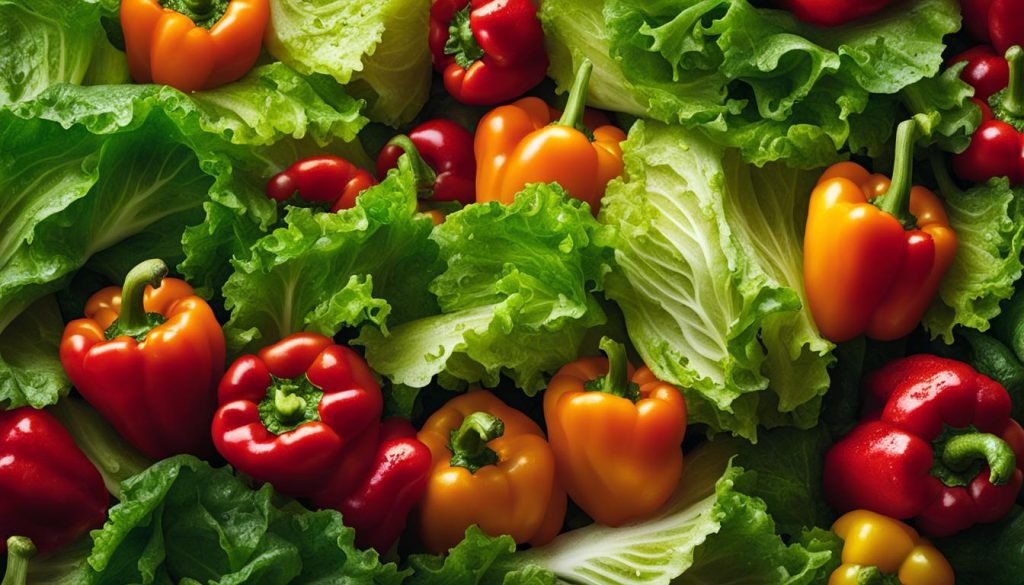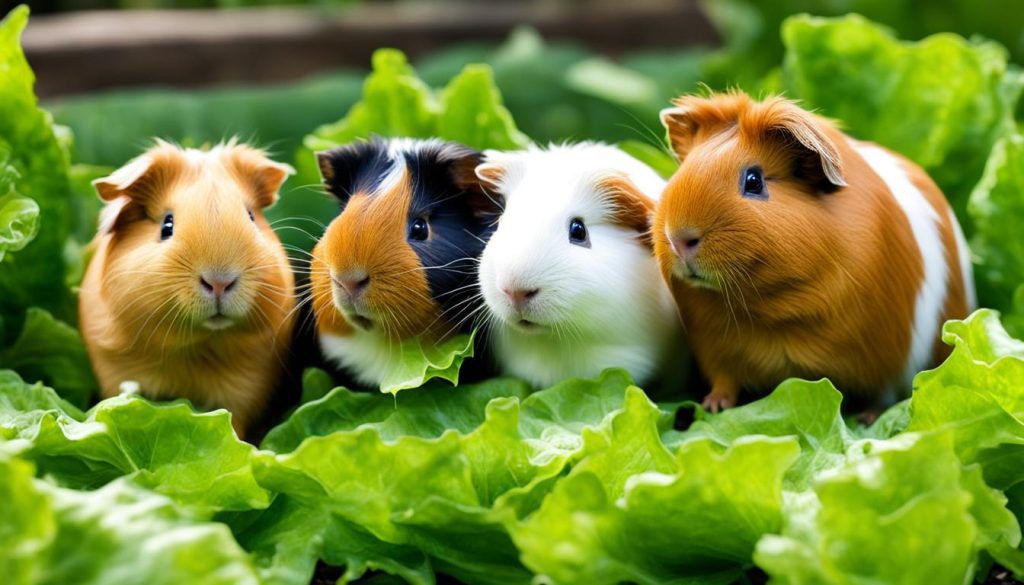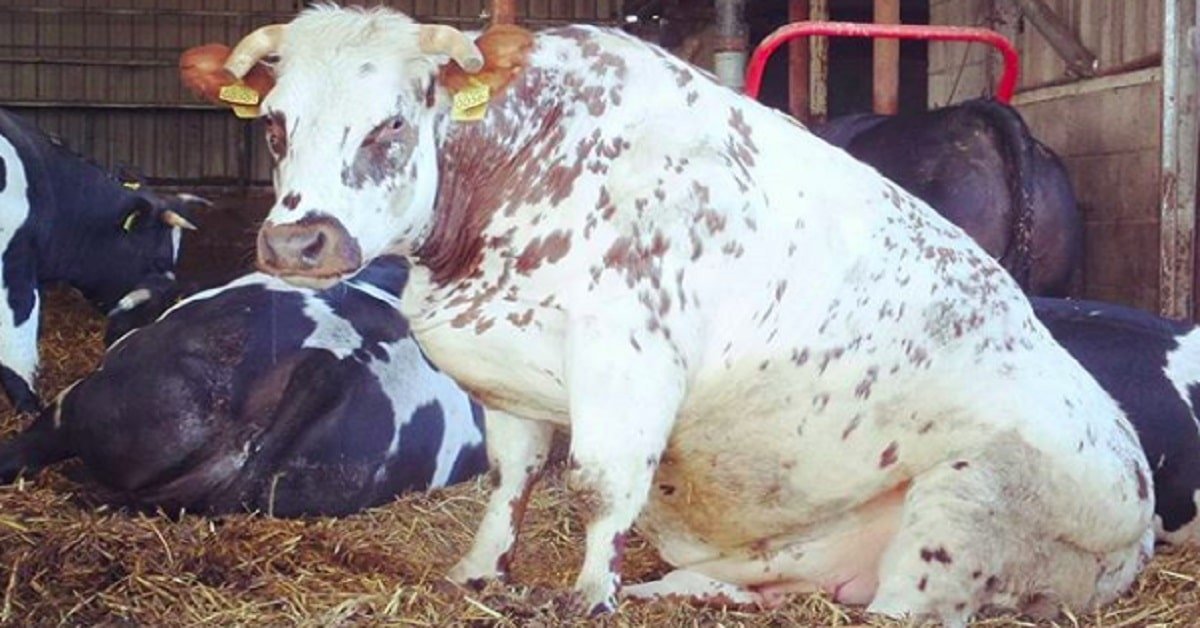Are you wondering if lettuce is a safe and healthy option for your guinea pig’s diet? You’ve come to the right place! As a guinea pig owner myself, I understand the importance of providing the right food for our furry friends. In this article, I will share with you some valuable insights on feeding lettuce to guinea pigs and provide you with safe feeding tips to ensure their well-being.
Can Guinea Pigs Eat Lettuce? Yes, they can.
- Not all lettuce varieties are safe for guinea pigs, but Romaine, Cos, and Little Gem lettuces are recommended choices.
- Lettuce can be a nutritious addition to a guinea pig’s diet as it contains essential vitamins and minerals, especially vitamin C.
- It’s important to rinse the lettuce before feeding it to guinea pigs and monitor their consumption to prevent any digestive issues.
- Offer a variety of leafy greens and vegetables to ensure a balanced nutritional intake for your guinea pig.
- Introduce new fruits and vegetables gradually to avoid any potential digestive problems.
The Nutritional Value of Lettuce for Guinea Pigs
When it comes to the nutritional value of lettuce for guinea pigs, different types of lettuces offer varying benefits. Lettuces such as Romaine, Red Leaf, Butterhead, Green Leaf, and even Iceberg lettuce each have their own unique composition of nutrients.
Romaine lettuce stands out as a particularly rich source of vitamin C, containing an impressive 24 mg of this essential nutrient. On the other hand, Red Leaf, Butterhead, and Green Leaf lettuces may have lower vitamin C content in comparison. However, it’s important to note that all lettuce varieties provide some amount of vitamin C to support guinea pigs’ overall well-being.
Calcium is another vital nutrient found in lettuce. The calcium content in different lettuce types, including Romaine, Red Leaf, Butterhead, Green Leaf, and Iceberg, ranges from approximately 33 mg to 36 mg. This consistent calcium presence ensures guinea pigs receive a suitable amount as part of their diet.
In addition to vitamins and minerals, lettuce also offers dietary fiber, promoting proper digestion for guinea pigs. It contains low amounts of sugar, making it a healthy choice for their overall diet.
While lettuce can contribute to a guinea pig’s nutritional needs, it’s important to remember that a well-rounded diet should include a variety of leafy greens and vegetables. Offering a diverse range of options ensures guinea pigs receive a balanced nutritional intake that supports their overall health and well-being.

Benefits of Lettuce for Guinea Pigs
When it comes to the guinea pig diet, feeding them lettuce can offer several benefits. One of the key advantages of lettuce is its high vitamin C content, which is essential for preventing scurvy and supporting a healthy immune system. Guinea pigs cannot produce their own vitamin C, so it is crucial to provide it through their diet. Lettuce also provides hydration, especially for guinea pigs who may not consume enough water. It contains a high water content that helps keep them hydrated and supports their overall well-being.
Furthermore, lettuce is often a favorite food for guinea pigs. They enjoy the crisp texture and refreshing taste, often choosing to eat it before other vegetables in their food bowl. However, it’s important to exercise moderation when feeding lettuce to guinea pigs. While it provides numerous benefits, lettuce also has sedative properties that can make guinea pigs sleepy. Therefore, it should be included as part of a varied diet that incorporates other vegetables to ensure a well-rounded nutritional profile.

Lettuce Selection and Feeding Guidelines
When it comes to feeding lettuce to guinea pigs, it’s crucial to choose the right types to ensure their health and well-being. Some lettuce varieties are more suitable for guinea pigs than others. Let’s take a closer look at the guidelines for lettuce selection and feeding.
Frequency: Romaine and green leaf lettuces are considered safe and nutritious options for guinea pigs. These varieties can be included in their diet five to seven times a week. On the other hand, red leaf and butterhead lettuces should be fed two to four times a week. It’s important to maintain a balanced intake of different lettuce types to provide a variety of nutrients for your furry friends.
Portion Size: A medium-sized leaf of lettuce is an appropriate portion size for guinea pigs. It’s important not to overfeed lettuce, as excessive consumption can lead to weight gain and other health issues. Remember, lettuce should be a part of a well-balanced diet that includes a variety of other vegetables.
Monitoring Calcium Intake: One aspect to consider when feeding lettuce to guinea pigs is monitoring their calcium intake. Some lettuce varieties, such as Romaine, contain a moderate amount of calcium. While calcium is essential for guinea pigs’ bone health, excessive intake can lead to urinary tract issues. Monitoring the guinea pigs’ urine and consulting with a veterinarian can help ensure their calcium intake remains within a healthy range.
Introducing New Foods: When introducing new fruits and vegetables to your guinea pigs’ diet, it’s important to do so gradually. Sudden changes in their diet can cause digestive upset. Start with small amounts and observe how your guinea pigs react before increasing the quantity. This approach will help prevent any potential issues and ensure a smooth transition to new foods.
In summary, selecting the right lettuce varieties and following feeding guidelines is crucial for the well-being of guinea pigs. Providing a balanced and varied diet, including lettuce in appropriate portions, not only ensures their nutritional needs are met but also contributes to their overall health and happiness.
Other Recommended Foods for Guinea Pigs
In addition to lettuce, guinea pigs can enjoy a variety of other vegetables as part of a healthy diet. Leafy greens like romaine lettuce, red and green leaf lettuces, mustard or turnip greens, cabbage, kale, cilantro, and parsley are excellent choices. These greens provide essential nutrients and vitamins that support guinea pigs’ overall well-being. Including red or green peppers and broccoli in their diet is also beneficial due to their high vitamin C content, which is crucial for guinea pigs’ immune system. Additionally, guinea pigs can savor carrots, zucchini, tomato, and sweet potatoes in moderation for added variety. It’s important to remember that while these vegetables are nutritious, they should be given in appropriate portions to maintain a balanced diet for guinea pigs. Lastly, fruits like kiwis, strawberries, and citrus fruits can be given occasionally as special treats due to their high sugar content. Remember to remove any seeds or pits from fruits before offering them to your furry friends.
Offering a diverse range of vegetables to guinea pigs ensures they receive a varied and nutritious diet. Remember to introduce new foods gradually to avoid digestive issues and monitor their eating habits to ensure they receive all the necessary nutrients. By following guinea pig food guidelines and incorporating these recommended foods, you can provide your guinea pigs with a healthy and well-rounded diet.
Conclusion
Including lettuce in a guinea pig’s diet can provide both safety and nutrition. Lettuce varieties such as Romaine, Cos, and Little Gem can offer essential vitamins and minerals, particularly vitamin C, which is crucial for guinea pigs. To ensure a well-balanced guinea pig diet, it is important to choose the right types of lettuce and offer a variety of leafy greens and vegetables.
Monitoring the guinea pigs’ urine is an essential step in maintaining their health, as excessive calcium consumption can lead to urinary tract issues. Additionally, introducing new foods gradually allows for better digestion and helps prevent any digestive disturbances.
By adhering to safe feeding guidelines, guinea pig owners can incorporate lettuce into their pets’ diets, allowing them to enjoy the numerous benefits it offers. Lettuce can be a tasty and hydrating addition to their daily meals, promoting overall well-being and contributing to their healthy lifestyle.
FAQ
Can guinea pigs eat lettuce?
Yes, guinea pigs can eat lettuce, but not all types are recommended. Romaine, Cos, and Little Gem lettuces are safe for guinea pigs to consume.
What is the nutritional value of lettuce for guinea pigs?
Lettuces differ in their nutritional composition. Romaine lettuce is the most nutritious and contains high amounts of vitamin C. Other lettuce varieties such as Red Leaf, Butterhead, and Green Leaf have varying nutritional values.
Are there any benefits of lettuce for guinea pigs?
Lettuce can provide essential vitamins and hydration for guinea pigs. It contains vitamin C, which is important for their overall health and immune system.
How should I select and feed lettuce to my guinea pig?
It’s important to choose the right types of lettuce and offer a variety of leafy greens and vegetables to ensure a balanced diet. Portion size should be monitored, and it’s important to watch for any signs of excessive calcium intake.
What other foods are recommended for guinea pigs?
In addition to lettuce, guinea pigs can consume a variety of other vegetables such as mustard or turnip greens, cabbage, kale, cilantro, and parsley. Fruits like kiwis, strawberries, and citrus fruits can be offered as occasional treats.






